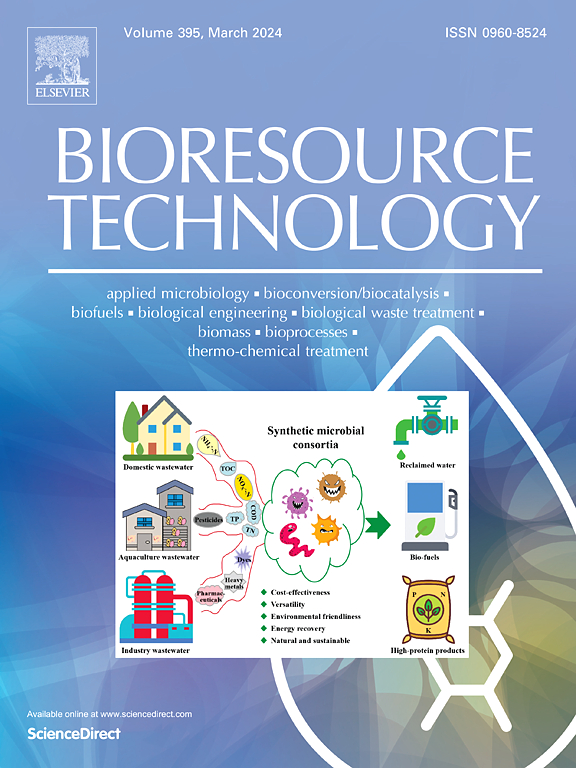Vermiculite changed greenhouse gases emission and microbial community succession in vermicomposting: Particle size investigation
IF 9.7
1区 环境科学与生态学
Q1 AGRICULTURAL ENGINEERING
引用次数: 0
Abstract
Greenhouse gas emissions during composting inevitably cause environmental pollution. This study investigated the effects of 10 % vermiculite of four particle sizes (<1.5 mm, 1.5–3 mm, 3–5.5 mm and 5.5–8 mm) on greenhouse gas emissions during vermicomposting of corn stover and cow dung. The results revealed that vermiculite reduced CH4 and N2O emissions but increased CO2 emissions. Vermiculite with a particle size of 3–5.5 mm presented the greatest environmental benefits, increasing cumulative CO2 emissions by 19 % and reducing CH4 and N2O emissions by 49 % and 62 %, respectively. A negative correlation was found between the specific surface area of vermiculite and cumulative greenhouse gas emissions (r = −0.7949). Furthermore, vermiculite intensified microbial interactions and accelerated microbial community succession. These results have important implications for understanding how vermiculite regulates greenhouse gas emissions and microbial mechanisms during the vermicomposting process.
蛭石改变了蛭堆肥的温室气体排放和微生物群落演替:粒度调查。
堆肥过程中的温室气体排放不可避免地会造成环境污染。这项研究调查了四种粒度的 10%蛭石(4 和 N2O 排放量,但二氧化碳排放量增加)的效果。粒径为 3-5.5 毫米的蛭石具有最大的环境效益,其二氧化碳累积排放量增加了 19%,CH4 和 N2O 排放量分别减少了 49% 和 62%。研究发现,蛭石的比表面积与累计温室气体排放量之间呈负相关(r = -0.7949)。此外,蛭石还加强了微生物之间的相互作用,加速了微生物群落的演替。这些结果对于了解蛭石如何在蛭石堆肥过程中调节温室气体排放和微生物机制具有重要意义。
本文章由计算机程序翻译,如有差异,请以英文原文为准。
求助全文
约1分钟内获得全文
求助全文
来源期刊

Bioresource Technology
工程技术-能源与燃料
CiteScore
20.80
自引率
19.30%
发文量
2013
审稿时长
12 days
期刊介绍:
Bioresource Technology publishes original articles, review articles, case studies, and short communications covering the fundamentals, applications, and management of bioresource technology. The journal seeks to advance and disseminate knowledge across various areas related to biomass, biological waste treatment, bioenergy, biotransformations, bioresource systems analysis, and associated conversion or production technologies.
Topics include:
• Biofuels: liquid and gaseous biofuels production, modeling and economics
• Bioprocesses and bioproducts: biocatalysis and fermentations
• Biomass and feedstocks utilization: bioconversion of agro-industrial residues
• Environmental protection: biological waste treatment
• Thermochemical conversion of biomass: combustion, pyrolysis, gasification, catalysis.
 求助内容:
求助内容: 应助结果提醒方式:
应助结果提醒方式:


